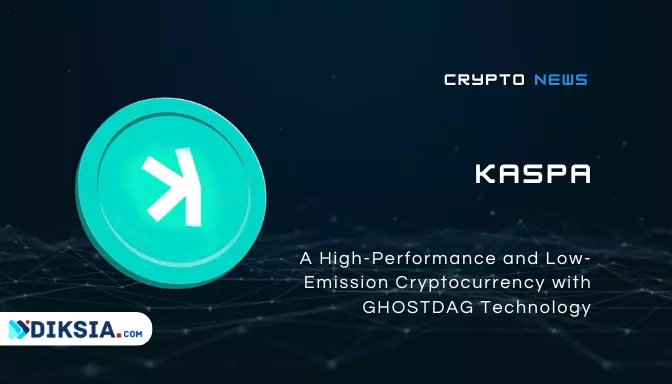Introduction
Diksia.com - Kaspa is a proof-of-work cryptocurrency that implements the GHOSTDAG protocol1. Unlike traditional blockchains, GHOSTDAG does not orphan blocks created in parallel, rather allows them to coexist and orders them in consensus. The Kaspa blockchain is actually a blockDAG, a generalization of Nakamoto consensus that allows for secure operation while maintaining very high block rates (currently one block per second, aiming for 10/sec, dreaming of 100/sec) and minuscule confirmation times dominated by internet latency.
The Kaspa implementation includes a lot of cool features such as Reachability to query the DAG’s topology, Block data pruning (with near-future plans for block header pruning), SPV proofs, and later subnetwork support which will make future implementation of layer 2 solutions much easier.
Kaspa also has a unique monetary policy that decreases emissions geometrically over time based on the 12-note scale of music. Known as the chromatic phase, this policy activated on May 7th 2022 with a block reward of 440 KAS. The block reward will be halved once per year, but smoothly: every month, the block reward is reduced by a factor of (1/2)^(1/12). This means that the ratio of block rewards in consecutive months is exactly the same as the ratio of frequencies of two consecutive semitones in a tempered chromatic scale. The initial block reward is the frequency of the note A4, and every averaged year is hence called an octave.
Kaspa Details
| Name | Kaspa |
|---|---|
| Symbol | KAS |
| Algorithm | SHA-256 |
| Consensus | GHOSTDAG |
| Block Time | 1 second |
| Block Reward | 440 KAS (initial) |
| Halving | Every month by a factor of (1/2)^(1/12) |
| Max Supply | 28,704,026,601 KAS |
| Circulating Supply | 21,808,366,099 KAS |
| Market Cap | $3,039,926,116 USD |
| Trading Volume | $46,435,882 USD |
What is Kaspa?
Kaspa is a cryptocurrency that aims to provide a fast, secure, and scalable transaction layer for decentralized applications. It is based on the GHOSTDAG protocol, which is a novel way of ordering blocks in a DAG (directed acyclic graph) structure. A DAG is a network of nodes that have edges pointing in one direction, forming a tree-like structure without cycles. Unlike a blockchain, which is a linear chain of blocks, a DAG can have multiple branches of blocks that are created in parallel by different miners. This allows for higher throughput and lower latency, as transactions can be confirmed faster and more frequently.






